13 Stunning Indoor Flowering Plants That Will Add Color to Your Space
Indoor plants with colorful blooms can easily elevate the look of any room. From vibrant petals to delicate flowers, these plants provide natural beauty and charm. They are a wonderful way to bring the outdoors inside while enhancing your home’s aesthetic. Whether you are a plant lover or new to gardening, there are plenty of options that can thrive indoors. Let’s take a look at some flowering plants that will brighten and refresh your space.
This post may contain affiliate links, which helps keep this content free. Please read our disclosure for more info.
African Violet
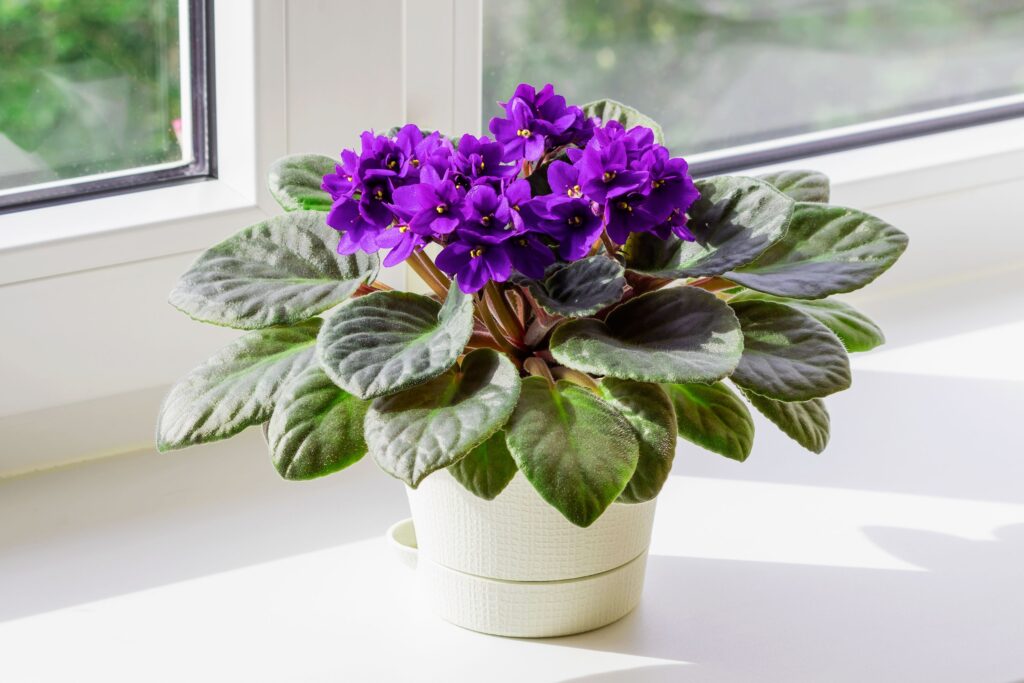
African violets are well-loved for their bright and colorful blooms, ranging from purple to pink and white. These compact plants are ideal for adding a splash of color to shelves or windowsills, creating a cheerful atmosphere in any room. They thrive in moderate, indirect light and require temperatures between 65 degrees F and 75 degrees F for optimal growth. Regular watering and occasional feeding with a balanced fertilizer will keep your African violets healthy and blooming.
To care for African violets, water them from the bottom to avoid wetting the leaves, as this can cause damage. They prefer a humid environment, so misting the leaves or using a humidity tray can help. Pruning dead flowers will promote more blooms, and repotting every couple of years ensures healthy growth. With the right care, African violets can bloom year-round.
Orchids
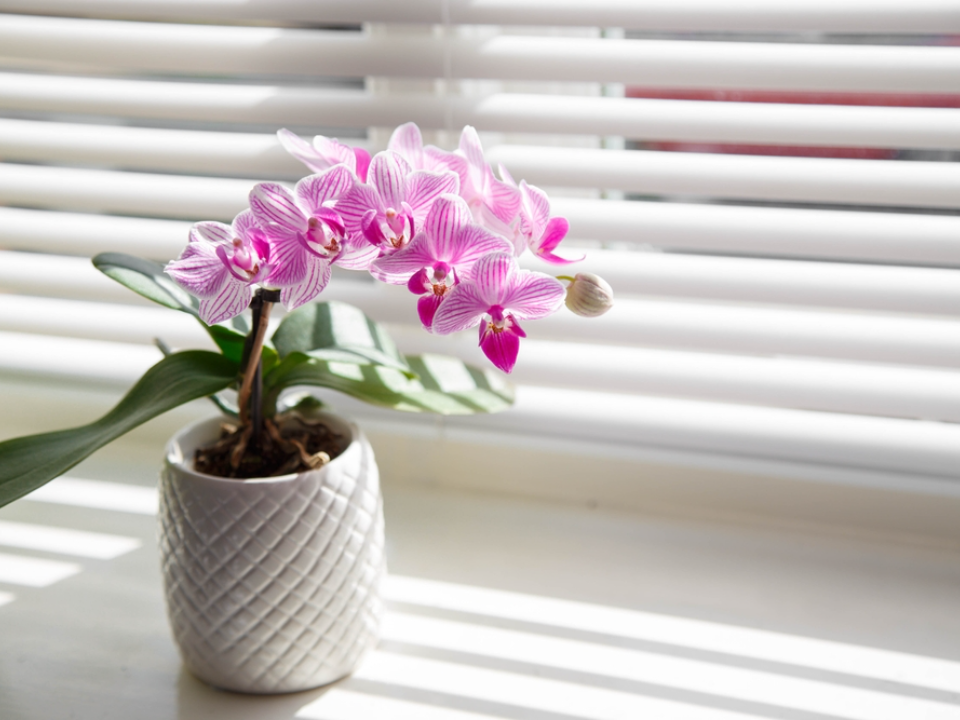
Orchids are stunning flowers that add an elegant touch to any room with their exotic and colorful blooms. These plants prefer bright, indirect light and grow best in temperatures ranging from 65 degrees F to 75 degrees F during the day and slightly cooler at night. Orchids need a well-draining potting mix, usually containing bark or sphagnum moss, to avoid root rot. With proper care, they can produce long-lasting flowers in a variety of colors like white, pink, and purple.
For proper care, water orchids once a week, ensuring that the roots dry out between waterings. Orchids also require high humidity, so misting the leaves or placing a humidity tray nearby is essential. Fertilize them with a balanced orchid food every 2 weeks during the blooming season. Cutting back spent flowers encourages the plant to bloom again.
Gerbera Daisy
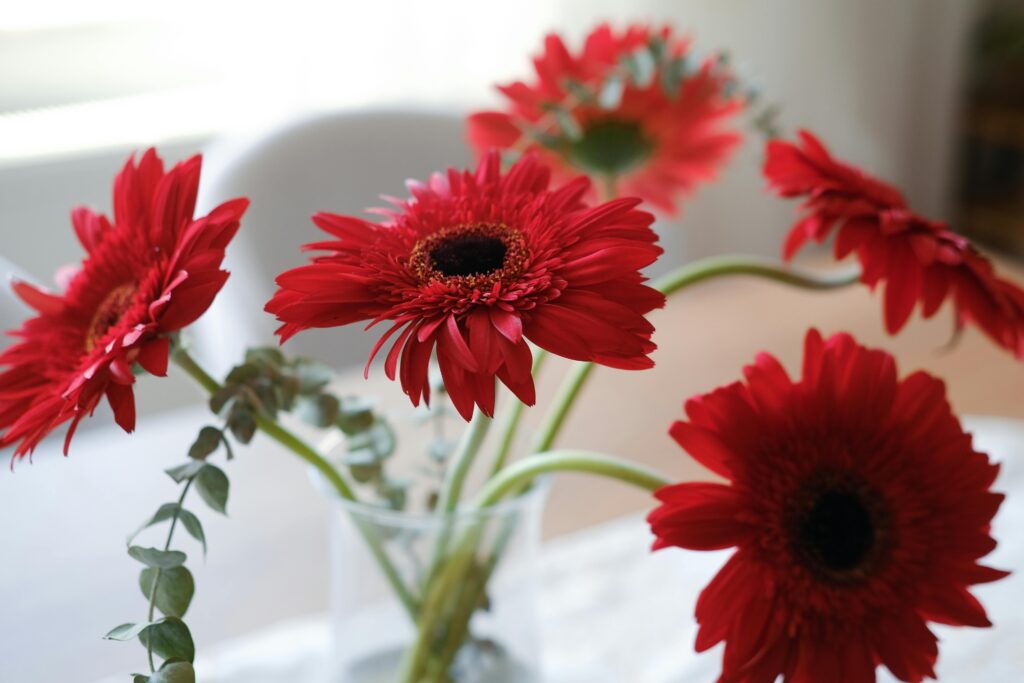
Gerbera daisies are known for their vibrant, daisy-like flowers in a wide range of colors, from red and yellow to pink and orange. These cheerful flowers are great for brightening up any indoor space, especially in sunny rooms where they can get plenty of light. Gerberas prefer temperatures between 65 degrees F and 75 degrees F and need a well-lit spot with indirect sunlight to thrive. They will flourish with proper watering and occasional feeding during the growing season.
To care for gerbera daisies, ensure they are in well-draining soil and water them regularly, allowing the soil to dry between waterings. Gerberas also need good air circulation to prevent fungal diseases, so avoid overcrowding them. Removing spent blooms will encourage new flowers to grow. Keep the soil slightly moist, but not soggy, for the best results.
Peace Lily
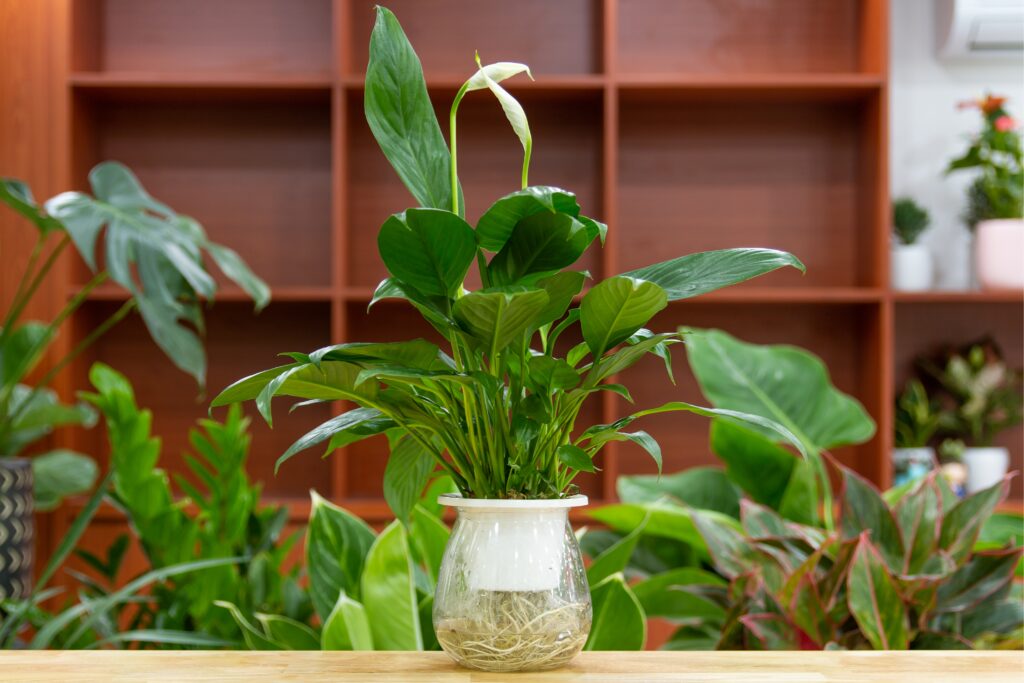
Peace lilies are known for their elegant white blooms and lush green leaves. These plants not only add a pop of color to your space but are also excellent air purifiers. Peace lilies prefer temperatures between 65 degrees F and 75 degrees F and thrive in low to medium light, making them ideal for indoor spaces with limited sunlight. Regular watering and occasional misting are essential to keep them looking fresh and healthy.
To care for a peace lily, water the plant when the top inch of soil feels dry, ensuring the soil drains well. Peace lilies enjoy higher humidity, so misting the leaves or using a humidity tray can be beneficial. They are relatively low-maintenance, but it is important to remove spent blooms and yellowing leaves to maintain the plant’s health. Peace lilies are known to bloom throughout the year when properly cared for.
Begonia
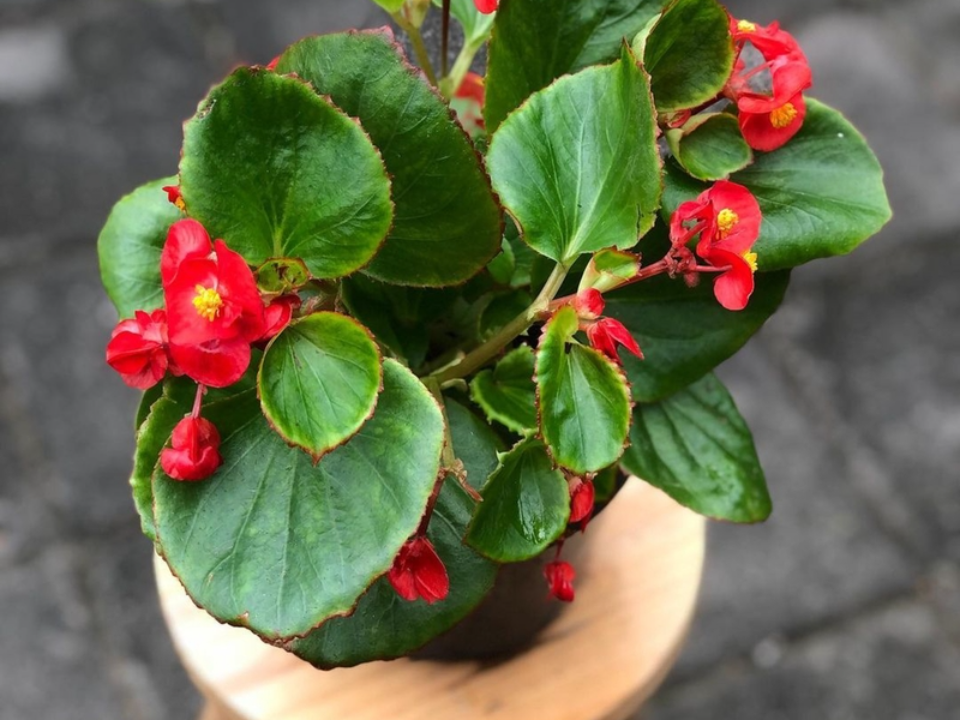
Begonias are perfect for adding a burst of color with their bright blooms, which come in red, pink, and white hues. They thrive in indirect light and prefer temperatures between 65 degrees F and 75 degrees F. These plants can be grown as hanging baskets, potted plants, or placed on shelves to bring vibrant color to any area of the home. With their beautiful leaves and stunning flowers, begonias are ideal for brightening up dull spaces.
To care for begonias, keep them in well-draining soil and water them when the soil feels dry to the touch. They prefer a humid environment, so misting the leaves or using a humidity tray can help. Begonias benefit from occasional fertilizing with a balanced fertilizer to encourage blooming. Pruning dead flowers and leaves will help keep the plant healthy and promote further growth.
Jasmine
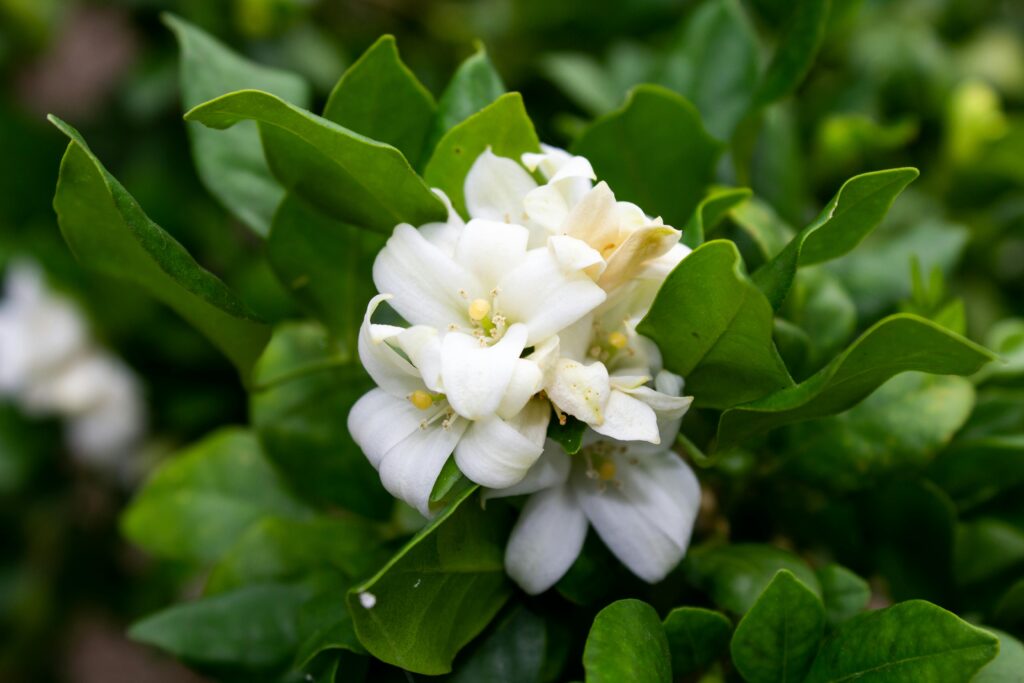
Jasmine plants are well known for their delicate, fragrant white or yellow flowers that can fill your space with a pleasant scent. These plants thrive in temperatures ranging from 60 degrees F to 75 degrees F and need bright, indirect light to bloom. Jasmine is an excellent choice for adding color and fragrance to living rooms or bedrooms. With proper care, it can flower multiple times a year, filling the space with natural beauty.
To care for jasmine, ensure it is planted in well-draining soil and water it when the soil begins to dry out. Regular pruning helps maintain the shape and promotes new growth. Jasmine also needs support, so it may be beneficial to use a trellis or similar structure for climbing. Fertilizing every few months with a balanced plant food will encourage healthy blooming.
Kalanchoe
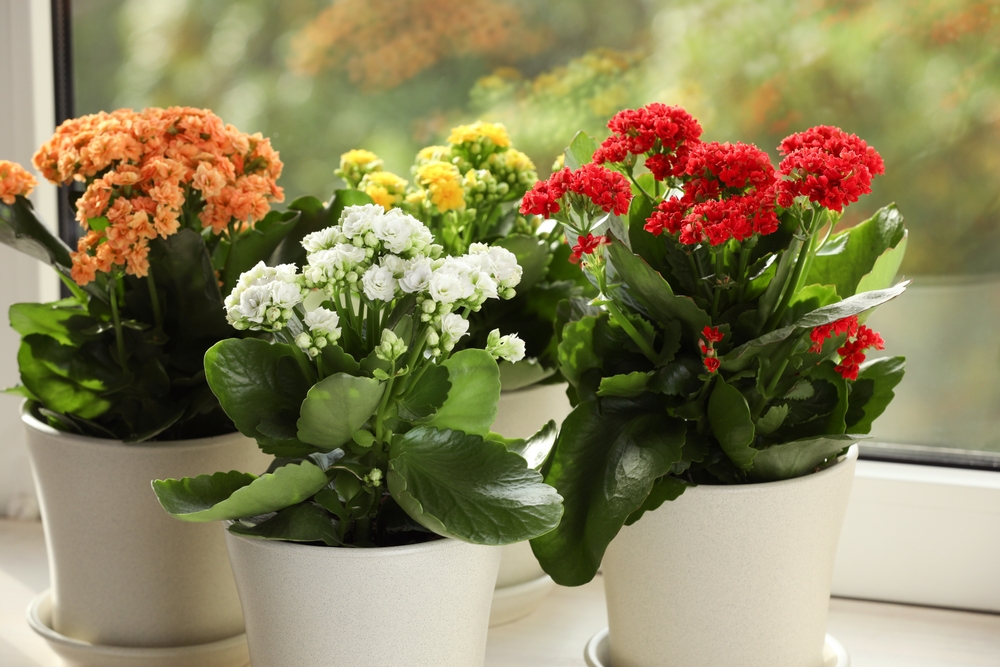
Kalanchoe is a hardy, succulent plant that is perfect for adding color with its bright clusters of flowers in shades like red, orange, and pink. These plants prefer warm temperatures between 60 degrees F and 85 degrees F and require bright, indirect sunlight for optimal growth. Kalanchoe is an excellent choice for those looking for a low-maintenance flowering plant. Once it blooms, it can last for several weeks, making it a wonderful addition to your indoor garden.
To care for kalanchoe, allow the soil to dry between waterings, as these plants do not like being overwatered. They thrive in well-draining soil, which prevents root rot. You can prune the plant to promote new flowers, and cutting back spent blooms will encourage the plant to flower again. Kalanchoe needs little maintenance and will continue to add color to your space with minimal care.
Amaryllis
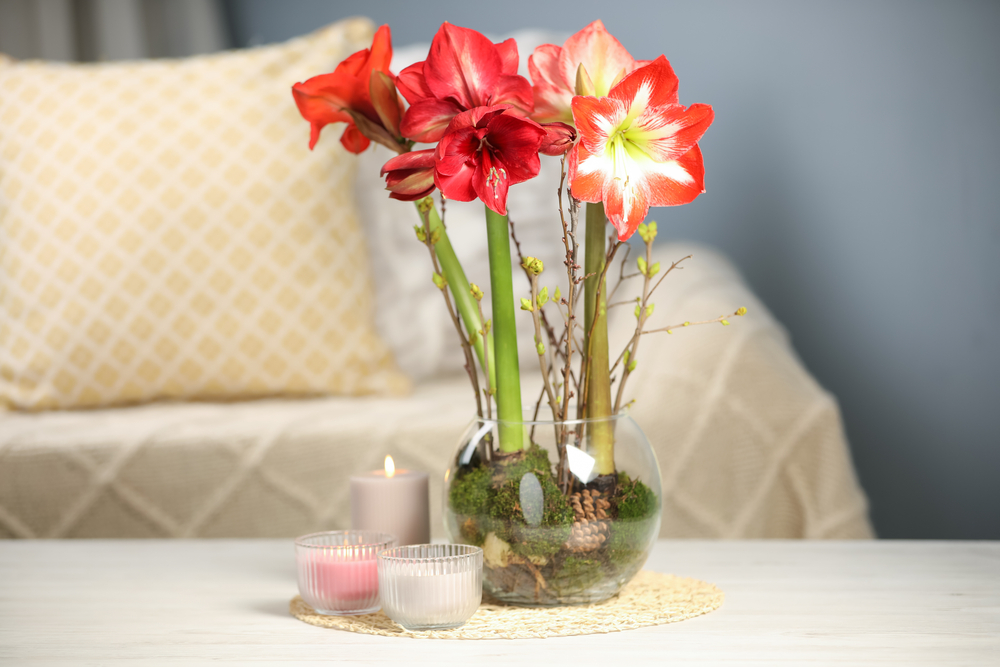
Amaryllis is known for its large, trumpet-shaped flowers in red, white, and pink hues, making it a striking addition to any indoor space. These plants thrive in temperatures between 60 degrees F and 70 degrees F and require bright, indirect light to produce their impressive blooms. Amaryllis is typically grown in pots, making it an easy-to-care-for indoor flower that can bloom in winter. Its large, showy flowers are perfect for adding a pop of color to your home during the colder months.
To care for amaryllis, water the plant only when the soil is dry to the touch, as overwatering can lead to bulb rot. After the plant blooms, allow the foliage to die back naturally and continue watering to encourage the bulb to rest before it blooms again. Amaryllis bulbs can be saved for future seasons and grown again the following year. This plant’s bold flowers and ease of care make it a favorite among indoor gardeners.
African Daisy (Osteospermum)
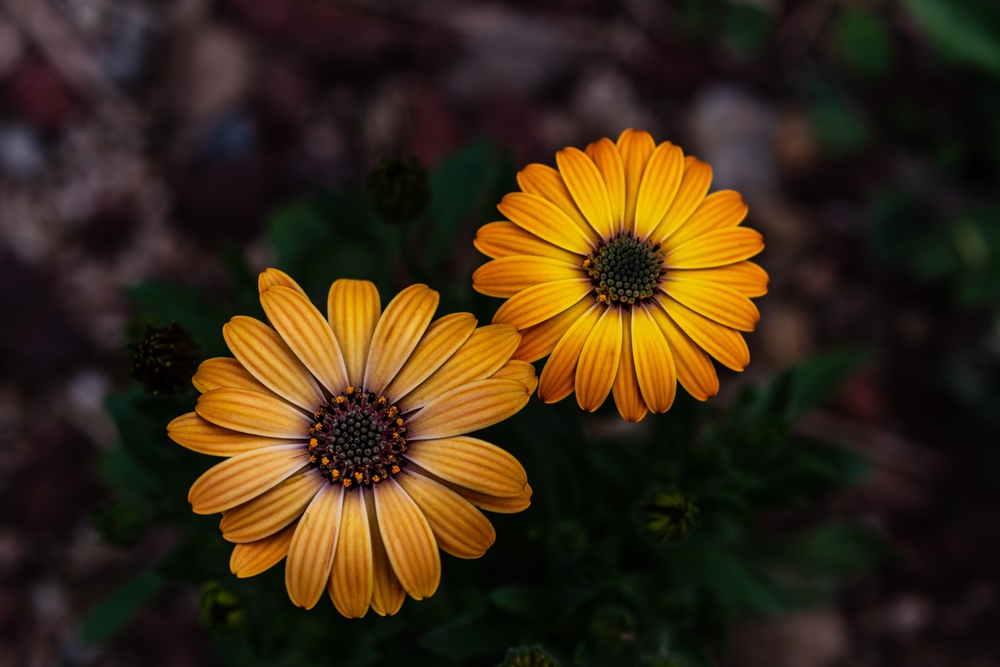
African daisies are vibrant, daisy-like flowers in a variety of colors, including purple, pink, and white. These plants thrive in bright light and are perfect for adding a splash of color to your indoor garden. African daisies grow well in temperatures between 60 degrees F and 75 degrees F and can bloom continuously throughout the year with proper care. They are easy to grow and maintain, making them an excellent choice for beginners.
To care for African daisies, plant them in well-draining soil and water them only when the soil is dry to the touch. Deadheading spent flowers will encourage more blooms. They enjoy bright light, so placing them near a window with indirect sunlight will help them thrive. With their long-lasting flowers, African daisies are an excellent option for a colorful indoor garden.
Bromeliad
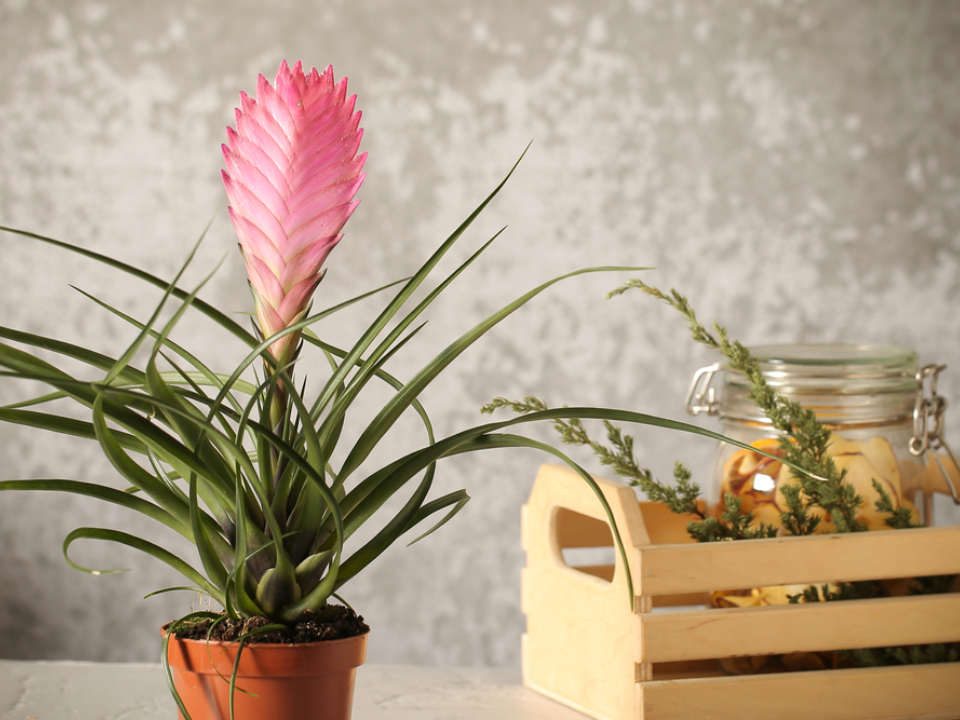
Bromeliads are exotic plants that add a bold pop of color with their bright, long-lasting flowers. These plants thrive in humid environments and temperatures between 65 degrees F and 75 degrees F, making them perfect for bathrooms or kitchens. Bromeliads are unique in that their flowers can last for months, making them a perfect choice for anyone looking for low-maintenance color. They are available in a variety of hues, including red, pink, orange, and yellow.
To care for bromeliads, water the plant’s central rosette (the cup) and keep the soil relatively dry. They prefer indirect light, so avoid placing them in direct sunlight. Bromeliads also enjoy higher humidity, so misting the leaves or using a humidity tray can help. Once the flowers fade, the plant can be propagated by offshoots, allowing you to enjoy more of these beautiful plants.
Hibiscus
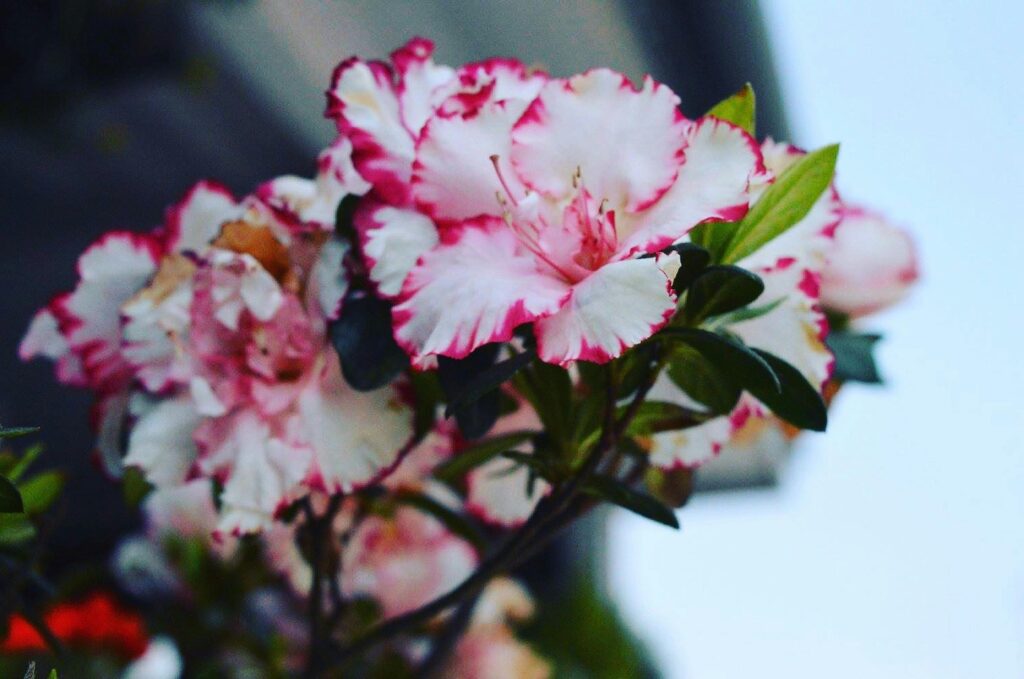
Hibiscus plants are known for their large, colorful blooms, which come in a variety of shades, including red, yellow, pink, and white. These tropical plants thrive in temperatures between 60 degrees F and 85 degrees F, making them suitable for indoor spaces that receive bright, indirect light. Hibiscus plants bloom throughout the year with proper care and can bring a touch of the tropics to your home. The flowers can last for several days, adding long-term color to your indoor garden.
To care for hibiscus, water the plant regularly to keep the soil moist but not soggy. It is essential to keep the plant in a well-draining potting mix to prevent root rot. Hibiscus plants benefit from regular pruning to maintain their shape and encourage more blooms. These plants also enjoy regular feeding during their growing season for optimal blooming.
Calibrachoa (Million Bells)

Calibrachoa, also known as Million Bells, is a small, trailing plant that produces a profusion of tiny, colorful flowers. It is an excellent choice for hanging baskets or cascading down shelves to add vibrant color to any indoor space. These plants thrive in temperatures between 60 degrees F and 75 degrees F and require bright, indirect light to encourage blooming. The small flowers come in a variety of colors, from purple to pink, yellow, and white, making them an attractive addition to your home.
To care for calibrachoa, ensure the plant is in well-draining soil and water it when the top inch of soil feels dry. These plants enjoy regular watering, but they should not sit in waterlogged soil. Fertilize them regularly with a balanced fertilizer to encourage continued blooms. Pruning dead flowers will promote more growth and keep the plant healthy.
Geranium
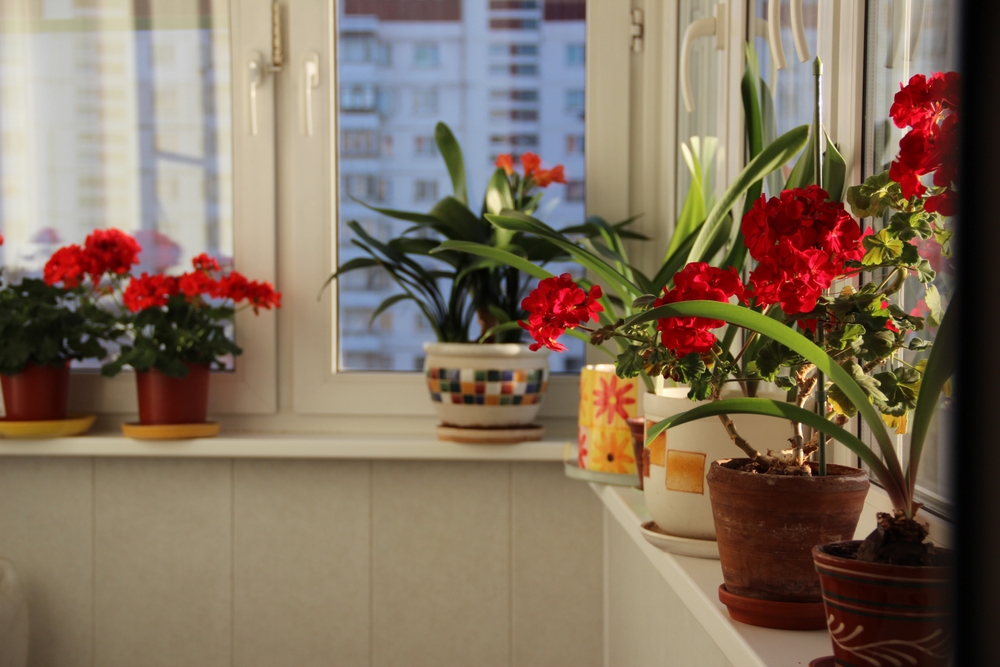
Geraniums are well-known for their vibrant colors and large, showy flowers. These plants thrive in moderate to bright light and temperatures between 65 degrees F and 75 degrees F, making them perfect for living rooms or sunny spots in your home. Geraniums come in various colors, including red, pink, purple, and white, adding a burst of color to any indoor garden. These plants are easy to grow and care for, making them a popular choice for home gardeners.
To care for geraniums, water them when the soil feels dry, but avoid letting the plant sit in standing water. They prefer a slightly dry environment, so do not overwater. Regular deadheading will keep the plant blooming and looking tidy. Geraniums enjoy regular feeding during the growing season, and with proper care, they will bloom for several months.
Indoor flowering plants not only brighten up your living space, but they also provide a sense of tranquility and freshness. With the right care, these plants can bloom throughout the year, offering lasting beauty.
This article originally appeared on Avocadu.
